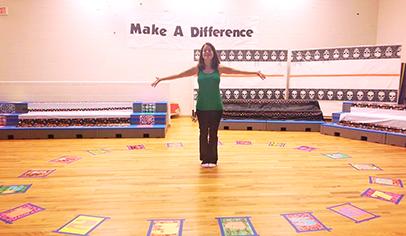How To Set Up Musical Cakes

A rundown of the basic steps needed to organize and execute a successful musical cakes activity at your next PTO event.
Editor’s Note: Because of the history of the term “cakewalk” and the activities it represented, we have updated this article with the term “musical cakes” instead.
What Is Musical Cakes?
“Musical cakes” has long been a popular activity at parent groups events, and it’s still going strong. That’s probably due to the game’s simplicity: As music plays, children walk around a large circle with numbers. When the music stops, a number is picked from a container and the child standing closest to the corresponding number on the circle wins a cake. Sounds like a sweet deal!
Over the years, parent groups have added their own twists to these events, but here’s a guide to help you put together a basic musical cakes activity.
What You’ll Need
-
Donated cakes or other prizes
-
At least two parent volunteers—one to name the winners and the other to help children playing the game
-
A music device, such as an iPhone or portable CD player
-
A table to display prizes
-
Construction paper, pieces of cardboard, carpet squares or vinyl flooring scraps to display numbers
-
Chalk, markers, or crayons for writing numbers
Join the PTO Today community (it's free) for access to resources, giveaways and more
Official Business First
Find out whether your group will need a permit. Some states and local governments require gaming permits for musical cakes and other games of chance. To find out whether a permit is needed in your area, search online for “charitable gaming” and the name of your state. It’s also a good idea to call your city hall and county government to ask whether they require any paperwork.
Musical Cakes Setup

Picture a large circle. For outside events, draw a circle on pavement. Place numbered stations around the circle, being sure to use a method that won't damage the flooring. You might write numbers around the circle using chalk, tape paper or cardboard pieces with numbers around the circle, or affix painters tape to the floor in the shape of numbers. Some groups collect carpet squares or use vinyl flooring scraps instead. Other options include using baseball bases, mouse pads, or poly spots (often used in gym class), and adding numbers to them.
Indoors, you can use pieces of paper, each with a number written on it, to create a circle shape. Or set up chairs to form a circle.
Set up your activity near an outlet if you plan to plug in a music player.
Display cakes or other prizes on a table. Use a hat, box, or bowl to hold numbers that will be drawn by a volunteer.
How It Works
Think of musical chairs:
-
The game begins when music starts; children walk around the circle as the music continues.
-
When the music stops, children move to the nearest number.
-
A parent volunteer pulls a number from a hat (or any container) and the child with that corresponding number wins the cake.
-
The process is repeated for a certain period of time or until prizes run out!
Prizes
It doesn’t have to be just cakes; you can be creative. Many groups put their own spin on this event, giving out prizes like cupcakes, candy, or a variety of different baked goods. Some give away little trinkets in an effort to reduce the amount of sweets at the carnival or festival. Book walks, giving away new or used books donated by school families, are a popular option.
Where To Get the Cakes (or Other Sweets)
Rely on donations. Some groups work with local bakeries to get donated cakes. Other groups make requests to parents and community members to send in cakes and other baked goods.
Is This a Fundraiser?
Musical cakes can be a fundraiser. Some groups sell tickets to participate, and if all the prizes are donated, the event can be a moneymaker.
Things To Consider: Food Rules and Playing Fair
-
Check with your school to see whether rules about food and snacks will apply at your event. You may need to use approved packaged goods as prizes.
-
Make sure you securely display the numbers so that children do not become confused (and upset) when a winning number is called.
Originally posted in 2013 and updated regularly.






















